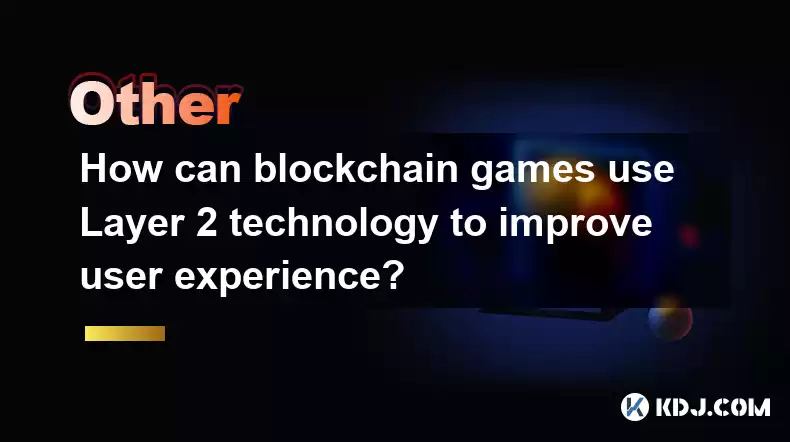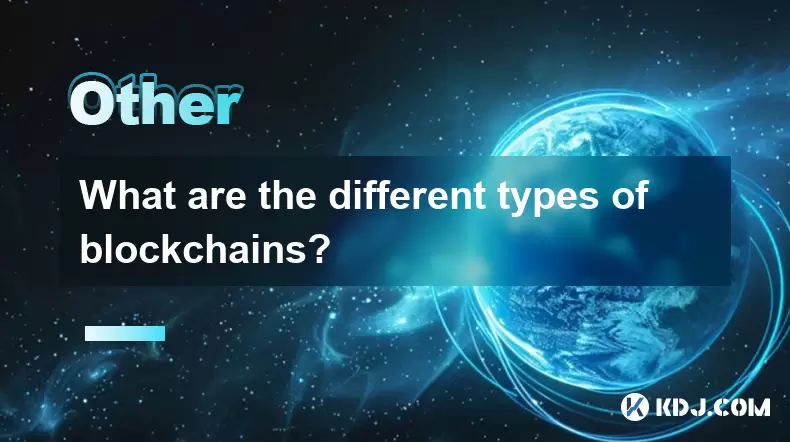-
 Bitcoin
Bitcoin $112400
-1.07% -
 Ethereum
Ethereum $3409
-3.27% -
 XRP
XRP $2.784
-6.60% -
 Tether USDt
Tether USDt $0.9997
-0.03% -
 BNB
BNB $739.3
-2.09% -
 Solana
Solana $158.0
-2.90% -
 USDC
USDC $0.9998
-0.02% -
 TRON
TRON $0.3213
-0.94% -
 Dogecoin
Dogecoin $0.1929
-5.01% -
 Cardano
Cardano $0.6974
-2.82% -
 Hyperliquid
Hyperliquid $36.69
-2.31% -
 Sui
Sui $3.327
-4.80% -
 Stellar
Stellar $0.3672
-5.18% -
 Chainlink
Chainlink $15.65
-3.07% -
 Bitcoin Cash
Bitcoin Cash $525.0
-1.68% -
 Hedera
Hedera $0.2291
-6.00% -
 Avalanche
Avalanche $20.91
-2.96% -
 Ethena USDe
Ethena USDe $1.000
0.00% -
 Toncoin
Toncoin $3.520
-1.12% -
 UNUS SED LEO
UNUS SED LEO $8.968
0.14% -
 Litecoin
Litecoin $105.7
0.26% -
 Shiba Inu
Shiba Inu $0.00001181
-1.79% -
 Polkadot
Polkadot $3.492
-2.08% -
 Uniswap
Uniswap $8.800
-3.10% -
 Dai
Dai $0.9999
-0.01% -
 Monero
Monero $289.9
-3.17% -
 Bitget Token
Bitget Token $4.243
-1.27% -
 Pepe
Pepe $0.00001006
-3.67% -
 Cronos
Cronos $0.1248
-5.68% -
 Aave
Aave $249.7
-2.50%
How can blockchain games use Layer 2 technology to improve user experience?
Blockchain games can enhance user experience by integrating Layer 2 tech, which boosts transaction speed, cuts fees, and improves scalability while maintaining security.
Apr 15, 2025 at 10:43 am

Blockchain games have gained significant popularity over the years, but they often face challenges related to scalability, transaction fees, and user experience. One solution to these problems is the integration of Layer 2 technology. Layer 2 technologies are designed to enhance the performance of blockchain networks by processing transactions off the main chain, thereby improving speed and reducing costs. This article explores how blockchain games can use Layer 2 technology to improve user experience.
Enhancing Transaction Speed
One of the most significant advantages of using Layer 2 technology in blockchain games is the enhancement of transaction speed. Traditional blockchain networks, such as Ethereum, can become congested, leading to slow transaction times that can be frustrating for gamers. Layer 2 solutions like Optimistic Rollups and ZK-Rollups allow transactions to be processed off-chain and then batched together for submission to the main blockchain. This results in faster transaction confirmations, which is crucial for a seamless gaming experience.
For instance, if a player wants to purchase an in-game item, the transaction can be processed much quicker using a Layer 2 solution. This not only improves the user experience but also encourages more players to engage with the game, knowing that their transactions will be swift and efficient.
Reducing Transaction Fees
Another critical aspect of improving user experience in blockchain games is reducing transaction fees. High gas fees on networks like Ethereum can deter players from participating in the game economy. Layer 2 technologies significantly lower these fees by processing transactions off the main chain, where the cost is much lower.
For example, Polygon (formerly Matic) is a popular Layer 2 scaling solution that can be integrated into blockchain games. By using Polygon, games can offer players the ability to conduct transactions at a fraction of the cost compared to the Ethereum mainnet. This makes in-game purchases and other transactions more affordable, thereby enhancing the overall gaming experience.
Improving Scalability
Scalability is another area where Layer 2 technology can greatly benefit blockchain games. As the number of players and transactions increases, the main blockchain can become overloaded, leading to slower performance and higher costs. Layer 2 solutions help mitigate these issues by handling a significant portion of the transaction load off-chain.
For instance, sidechains are a type of Layer 2 solution that can be used to offload some of the transaction processing from the main blockchain. This allows blockchain games to handle a higher volume of transactions without compromising on speed or cost. As a result, games can support a larger player base and maintain a smooth and enjoyable user experience.
Enhancing Security and Trust
While Layer 2 technologies are designed to improve performance, they also need to maintain the security and trust that blockchain networks are known for. Solutions like Optimistic Rollups and ZK-Rollups use cryptographic proofs to ensure that transactions processed off-chain are valid and secure. This means that players can trust that their in-game transactions are safe and that the integrity of the game's economy is maintained.
For example, ZK-Rollups use zero-knowledge proofs to verify transactions without revealing the underlying data. This adds an additional layer of security and privacy, which can be particularly appealing to players who are concerned about the safety of their in-game assets.
Seamless Integration with Existing Blockchain Infrastructure
Integrating Layer 2 technology into existing blockchain games can be a seamless process, thanks to the flexibility and compatibility of these solutions. Developers can leverage existing tools and frameworks to implement Layer 2 solutions without requiring a complete overhaul of their game's infrastructure.
For example, Ethereum-compatible Layer 2 solutions like Polygon can be integrated into games that already run on the Ethereum network. This allows developers to enhance the game's performance without disrupting the existing user base or game mechanics. By using standardized protocols and APIs, developers can ensure a smooth transition to Layer 2 technology, thereby improving the user experience without compromising on the game's core features.
Real-World Examples of Layer 2 in Blockchain Games
Several blockchain games have already started to leverage Layer 2 technology to enhance their user experience. Immutable X is a popular Layer 2 solution that has been adopted by games like Gods Unchained and Illuvium. By using Immutable X, these games can offer players instant, fee-less transactions, which significantly improves the gaming experience.
Another example is Loopring, a Layer 2 solution that has been integrated into games like Crypto Unicorns. By using Loopring, these games can provide players with faster and cheaper transactions, making it easier for them to buy, sell, and trade in-game assets.
FAQs
Q: Can Layer 2 technologies be used with any blockchain network?
A: While many Layer 2 solutions are designed to work with specific blockchain networks like Ethereum, there are also more versatile solutions that can be adapted to other blockchains. It's important for developers to choose a Layer 2 solution that is compatible with their chosen blockchain network.
Q: How do Layer 2 solutions affect the decentralization of blockchain games?
A: Layer 2 solutions can maintain the decentralization of blockchain games by using cryptographic proofs and decentralized networks to validate transactions. However, the level of decentralization can vary depending on the specific Layer 2 solution being used.
Q: Are there any risks associated with using Layer 2 technology in blockchain games?
A: While Layer 2 technologies are designed to be secure, there can be risks associated with their implementation, such as potential vulnerabilities in the off-chain processing or the need for users to trust the Layer 2 solution. It's important for developers to thoroughly test and audit their chosen Layer 2 solution to mitigate these risks.
Q: How can players verify the security of transactions processed on Layer 2?
A: Players can verify the security of Layer 2 transactions by checking the cryptographic proofs provided by solutions like Optimistic Rollups and ZK-Rollups. Additionally, many Layer 2 solutions offer transparency tools and public dashboards that allow users to monitor transaction activity and ensure the integrity of the system.
Disclaimer:info@kdj.com
The information provided is not trading advice. kdj.com does not assume any responsibility for any investments made based on the information provided in this article. Cryptocurrencies are highly volatile and it is highly recommended that you invest with caution after thorough research!
If you believe that the content used on this website infringes your copyright, please contact us immediately (info@kdj.com) and we will delete it promptly.
- BlockDAG, SEI, Ethena: Top Crypto Performers Under the Microscope
- 2025-08-03 10:50:16
- Bitcoin Blasts Past $119K: How Institutional Adoption and Macro Shifts Fuel the Fire
- 2025-08-03 10:55:16
- Crypto, Grok, and August: Decoding the Latest Trends and Insights
- 2025-08-03 11:10:16
- Crypto, Phishing, and Your Wallet: A New Yorker's Guide to Staying Safe
- 2025-08-03 10:30:16
- Troller Cat Meme Coin Presale Soars: A New King in the Crypto Jungle?
- 2025-08-03 10:30:16
- Grayscale, Altcoin Trust, and Mid-Cap Mania: What's the Deal?
- 2025-08-03 08:50:16
Related knowledge

What is the difference between on-chain and off-chain transactions?
Aug 02,2025 at 04:22pm
Understanding On-Chain TransactionsOn-chain transactions refer to digital asset transfers that are recorded directly on a blockchain ledger. These tra...

What is the double-spending problem and how does blockchain prevent it?
Aug 02,2025 at 01:07pm
Understanding the Double-Spending ProblemThe double-spending problem is a fundamental challenge in digital currency systems where the same digital tok...

What is the difference between a blockchain and a database?
Aug 01,2025 at 09:36pm
Understanding the Core Structure of a BlockchainA blockchain is a decentralized digital ledger that records data in a series of immutable blocks linke...

How does blockchain handle scalability?
Aug 02,2025 at 02:58pm
Understanding Blockchain Scalability ChallengesBlockchain scalability refers to a network's ability to handle an increasing volume of transactions wit...

What are the different types of blockchains?
Aug 03,2025 at 03:01am
Public Blockchains: Open and Decentralized NetworksPublic blockchains are the most widely recognized type of blockchain, characterized by their open a...

What is a hash in a blockchain?
Aug 02,2025 at 05:28am
Understanding the Concept of Hash in BlockchainA hash in the context of blockchain technology refers to a unique digital fingerprint generated by a cr...

What is the difference between on-chain and off-chain transactions?
Aug 02,2025 at 04:22pm
Understanding On-Chain TransactionsOn-chain transactions refer to digital asset transfers that are recorded directly on a blockchain ledger. These tra...

What is the double-spending problem and how does blockchain prevent it?
Aug 02,2025 at 01:07pm
Understanding the Double-Spending ProblemThe double-spending problem is a fundamental challenge in digital currency systems where the same digital tok...

What is the difference between a blockchain and a database?
Aug 01,2025 at 09:36pm
Understanding the Core Structure of a BlockchainA blockchain is a decentralized digital ledger that records data in a series of immutable blocks linke...

How does blockchain handle scalability?
Aug 02,2025 at 02:58pm
Understanding Blockchain Scalability ChallengesBlockchain scalability refers to a network's ability to handle an increasing volume of transactions wit...

What are the different types of blockchains?
Aug 03,2025 at 03:01am
Public Blockchains: Open and Decentralized NetworksPublic blockchains are the most widely recognized type of blockchain, characterized by their open a...

What is a hash in a blockchain?
Aug 02,2025 at 05:28am
Understanding the Concept of Hash in BlockchainA hash in the context of blockchain technology refers to a unique digital fingerprint generated by a cr...
See all articles

























































































